A tray ceiling screams style. Many homes can feel too squarish with their straight walls, straight floors, and straight ceilings. You can add paint and carpet, but your rooms will still have a flat surface for ceilings.
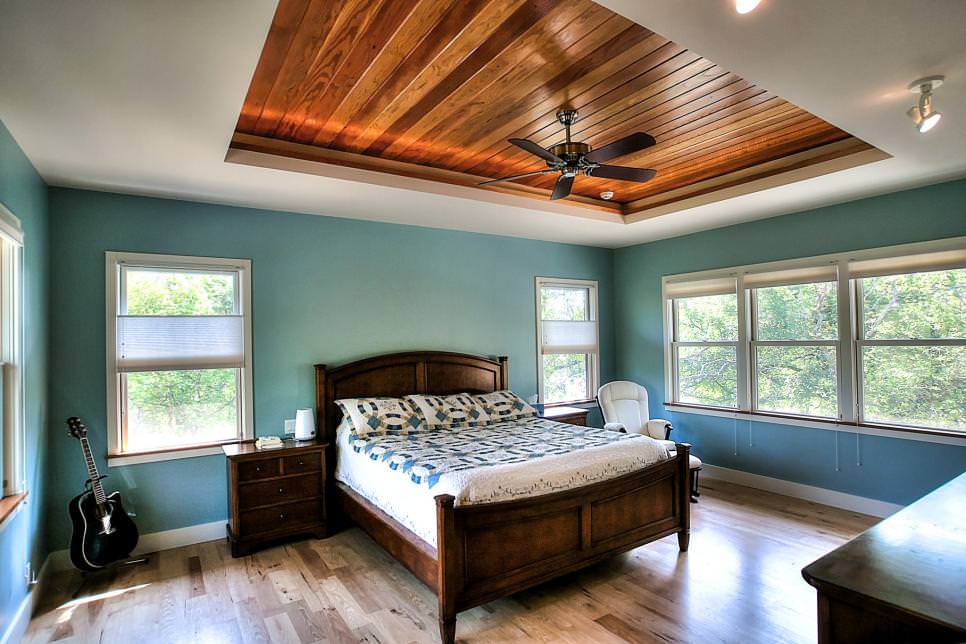
Tray ceilings aren’t relegated to a luxurious mansion. The rooms in your home can have a tray ceiling, and we’re going to show you what we mean. If you’ve dreamed of having one, after we’ve finished here, you’ll be able to install a rectangular tray ceiling on your own.
There is a simple way to frame the view. Push into the rectangular space above your ceiling and treat yourself to a tray ceiling. This will make any room, no matter the height, feel luxurious and elegant.
What Is A Tray Ceiling?
Tray ceilings, otherwise known as recessed or inverted ceilings, resembles a giant upside-down rectangular tray embedded in the ceiling. The central part is several inches or feet higher compared to the edges, which draws the eye upward, adds visual interest, and gives the illusion of three-dimensionality.
Tray ceilings are defined by the contour and frame of the room. It’s achieved with a drop-down border placed around the edges of the ceiling. The depth of the inside tray recession can be anywhere between one inch and 12 inches. The exact measurements depend on the ceiling height and the vibe you want to create.
Tray Ceiling Delights For Your Living Space
Check out the latest tray ceilings and see how they inspire you.
Subtle Tray Ceiling
This contemporary living room by Alan Mascord Design Associates has a rectangular tray ceiling with a simplified design. The ceiling is also painted in the same colors as the walls and you’ll also notice the back wall has a central ceiling that stands out.
Wood Panel Tray Ceiling
Adding wood to the rectangular ceiling style brings warmth into a room. Tray ceilings are common in kitchens, dining rooms, and as you can see in this interior designed by studio MHK Architecture & Planning, a center decorated with wood planks looks exquisite.
Tray Ceiling With Flush Lighting
Another idea is to use color to create unique features and details that highlight other elements in the room. This living room layout is from Harwick Homes and features white molding trim around the windows, doors, walls, and ceiling. It adds depth to the space and makes the simple and neutral color scheme exciting.
Pastel Tray Ceiling
A great way to take advantage of this rectangular ceiling style is by using color. This modern setting by Laura U Interior Design is so bright and cheerful thanks to the orange pastel ceiling. The large windows add more light. It also has multiple built-in light sources evenly distributed across the surface.
Ambient Tray Ceiling
If you prefer your tray ceiling style to have a simple monochromatic design you can still help it stand out by adding accent lighting. LED bands can be installed all along the inner edges. You can take inspiration from this stylish lounge area designed by studio Michael Abrams Interiors.
Rustic Farmhouse Tray Ceiling
The differences between the ceiling and walls or the rest of the room can be subtle. This example has accent lights installed along the outside and an interior decorated with wood.
White Tray Ceiling
White tray ceilings are not common. However, with this setup, natural light is a force. of nature. Not only do the ceilings frame the sections of a large room, they add lighting where chandeliers or table lamps can’t reach. Just run the lighting around the edge and your room will be brighter without light bulbs.
Country Tray Ceiling
Are you looking to give your room some pizzazz? Think about warming up your ceiling with a bit of wood. Whether you install lighting or not, the comforting look will create a welcoming feel without forcing you to change anything else.
Rustic Kitchen Farmhouse Tray Ceiling
Putting a layer of shiplap into your tray ceiling will increase the farmhouse look of your room. Plus the texture is great for adding life and interest to an unexpected place.
Elegant Tray Ceiling
While we’re talking about wood for tray ceilings, let’s think about ornate trim pieces. Include a pattern on your ceiling and your dining room, or other rooms, and would look classy.
Victorian Tray Ceiling
Contrary to some opinions, ceilings can be a great place for wallpaper, when it’s the textured kind. Just a little bit of color and your space will seem infused with your unique personality.
Foyer Tray Ceiling
Include a pattern, especially in rooms that are neutral like a bathroom. That little extra something will give you a smile each time you enter the room. You might even want to add that element throughout your home too.
Kitchen Island Tray Ceiling
Many people are worried more about how others will view their rooms when making design decisions. If that describes you, put some neutral yet durable tile across your tray ceiling. The effect will feel expensive without emptying your pockets.
Master Bedroom Tray Ceiling
Does your home have tray ceilings that are deeper than usual? Make that count toward your design by painting them a color instead of the usual white. It will look charming and intentional instead of an eyesore.
Dining Room Tray Ceiling
A round tray ceiling over a round dining room table will give your space the perfect look of beauty and symmetry while showing off your knowledge of interior design. Rooms with this type of ceiling will always make a better impression.
Multi-Layer Tray Ceiling
Add the extra height with another layer or two. You won’t regret the gained headspace or the luxury look you’ll achieve.
Difference Between Coffered Ceiling And Tray Ceiling?
A close relative of the coffered ceiling, which has numerous recessed regions in a grid pattern, a tray ceiling has only one recessed area yet can be as stunning as the coffered ceiling.
Although tray and coffered ceilings are confused, there are numerous distinctions between the two. The distinctions range in price, installation, and materials.
The distinction between a tray and a coffered ceiling is that a coffered ceiling consists of sunken panels, whereas the other option resembles an upside-down tray. The people that do opt for coffered ceilings often do so because they aim to create an airy feel and may add value to your home. However, this comes at a price, since tray ceilings are cheaper compared to coffered ones.
The Most Popular Ceilings
Here are the most popular ceilings in households today.
We’ve already covered tray ceilings, so we thought we’d mention the other most common ceiling styles.
Cathedral Ceilings
Speaking of architectural features, cathedral ceilings are very eye-catching and impressive. They’re also referred to as vaulted ceilings and have sloping sides that form an upside down V, meeting up towards the center at the highest point possible. These ceilings are high and they make spaces look and feel elegant, airy, and impressive.
Cathedral ceilings are also of different types, based on the shape of the scaffolding. The barrel cathedral ceiling for example has a single curved arch and is built under the rafters. The ceiling has two barrel vaults that intersect at 90 degree angles and form 4 convex ribs attached to the corners of the room.
A cloister ceiling has arches that rise from the middle of each wall as opposed to the corners and form concave ribs that curve inward. There’s also the domed ceiling which has a central spherical arch.
Coffered Ceilings
You can easily recognize this type of ceiling by its waffle-like pattern. It forms a grid o sunken panels and molding and it has a classic, old-school look. In the past, it was a sign of luxury as coffered ceilings were often made of carved stone or expensive wood.
Suspended Ceilings
You could call this a second ceiling below an existing one. It’s also known as a drop ceiling and it’s common in offices and other types of spaces where there’s a lot of wiring. It’s a sort of decorative ceiling which is flat and made of lightweight acoustic panels inside a grid.
Conventional Ceilings
This is the type that we’re all familiar with. It’s mostly found in regular homes and it’s the standard type of ceiling that fits with most types of spaces. It’s simple and has a flat surface. This makes it versatile and can be customized in different ways.
Tray Ceiling Installation For Beginners
Here is a step-by-guide on how you can create a tray ceiling in your home.
DIY Tray Ceiling Installation
If you’re up for a challenge, there are many different ways in which you can customize and decorate a ceiling.
First, you will need to create the recess and the ceiling needs to have drywall attached before you start constructing the tray. Determine the width of the lowered area. It should be in relation to the overall size of the room and attach furring strips along this outline.
Next, attach drywall to the furring followed by the layering bead specifically designed for tray ceilings. Tape all the seams and the inside corners and use joint compound to hide the imperfections.
You can then go ahead and paint your new ceiling. Check out this detailed tutorial on extremehowto for more info.
What You Need:
- Chalk line
- 2×4 lumber
- Furring strips
- Wood glue
- Screws
- ½ inch drywall
- EZ tray bead
- ceiling paint
Preparation Instructions:
- Using chalk lines, mark out the shape of your recess.
- Screw the furring strips along the lines you’ve marked, creating the shape of the recess.
- Cut and attached the drywall to the outer shape. Drill into the furring strips.
- Using the EZ trim beading, trim the inside edges of the tray ceiling.
- Prime and paint using ceiling paint.
How To Install A Wood Tray Ceiling
Based on whatever type of ceiling you have, you can come up with a design plan to decorate it and enhance its character.
A ceiling style can be decorated with planks and a conventional ceiling can be transformed into an entirely different type. You can also use paint to highlight the existing design or add some molding, extra beams, built-in lighting to create a statement ceiling.
There are a few ideas on thelivedinlook that you might like.
What You Need:
- brad nailer and nails
- measuring tape
- wood glue
- Wood planks
- mitre saw
Preparation Instructions:
- Measure and plan the way you want to have the planks.
- Cut the planks to size using the mitre saw.
- Using brad nails and wood glue, install the planks on the ceiling.
- Paint or stain the finished result.
How To Install A Chevron Plank Tray Ceiling
You can also decorate an existing tray to make it even more interesting. A beautiful idea is to install planks into the center section and create a chevron pattern. You can use plywood to lower costs, but you can also use shiplap and tongue-and-groove planks.
Start by measuring the ceiling. Mark the center on each side and the corners and find the center point where they all meet.
Then figure out what the angles of the planks should be so they match and you don’t get any empty spots or misaligned planks. Then cut your plywood or planks and start to attach them to the ceiling in sections using adhesive and nails. In the end, paint everything. Check out queenbeeofhoneydos for more details.
What You Need:
- Wood planks or plywood
- wood glue
- brad nailer and nails
- paint
Preparation Instructions:
- Measure the ceiling area and the planking.
- Layout how and where you want the chevron planking to go.
- Cut all the planks to size.
- Start installing each plank, one by one.
- Paint and add a finish to the planks with a few coats.
Frequently Asked Questions (FAQ)FAQ
Is A Tray Ceiling Modern?
Even if they have been around for hundreds of years, tray ceilings are still employed in modern residences. A tray ceiling can be as plain or as ornate as desired to complement the room’s aesthetic. Crown molding is used within tray borders to lend a touch of elegance.
Do Tray Ceilings Add Value To Your Home?
The woodwork required to construct this type of ceiling will increase your home’s value. When a vent system is added in older homes built before the advent of AC, air ducts are routed on one side of the ceiling and through the rooms.
How Much Do Tray Ceilings Cost?
Tray ceilings are worth the time and effort as they add value to your home. The price is different according to the city. If you’re building a new home, the ceiling could cost between $550 and $1,700, but it will also depend on the size of the ceiling.
How To Create The Illusion Of A Tray Ceiling?
If you want to achieve an elevated appearance, the first thing you would need to do is paint the drop-down border a light color. Next, choose a darker color for your recessed. Darker colors add depth, which produces an illusion, thus making the recessed tray seem far away.
How To Choose Paint Colors For A Tray Ceiling?
When painting tray ceilings, you want to add drama to the rooms. You would never paint the ceiling white or beige. For full effect, pastel colors would look superb and stylish.
Can You Put Crown Molding On A Tray Ceiling?
If you want crown molding on your tray ceiling, then the only place you can put it is on the inside of the ceiling. You could also add crown molding on the outside edges.
What Is A Reverse Tray Ceiling?
There isn’t much of a difference as a tray ceiling is similar to a reversed tray ceiling. The difference is with the center height as it contrasts with their perimeter. Instead of a taller center height, the perimeter area is lower.
Tray Ceiling Conclusion
A tray ceiling can conceal mechanical elements in rooms, like wiring or piping, within its drop-down border. This is an excellent choice for homes where routing via the walls is not practical in the rooms.
The ceilings are created using dimensional timber and then covered in drywall. For a clean, minimalist design, the drywall can be taped and completed without trim. You also have the option to add corner molding in case you want to conceal the seams in your rooms.
Because the majority of rooms are either rectangular or square, the majority of ceilings are as well, but there are no fast and hard design guidelines. Trays might be round, circular, or any other shape.
The post Superb Tray Ceiling Designs For Your Living Spaces appeared first on Home Decorating Trends - Homedit.



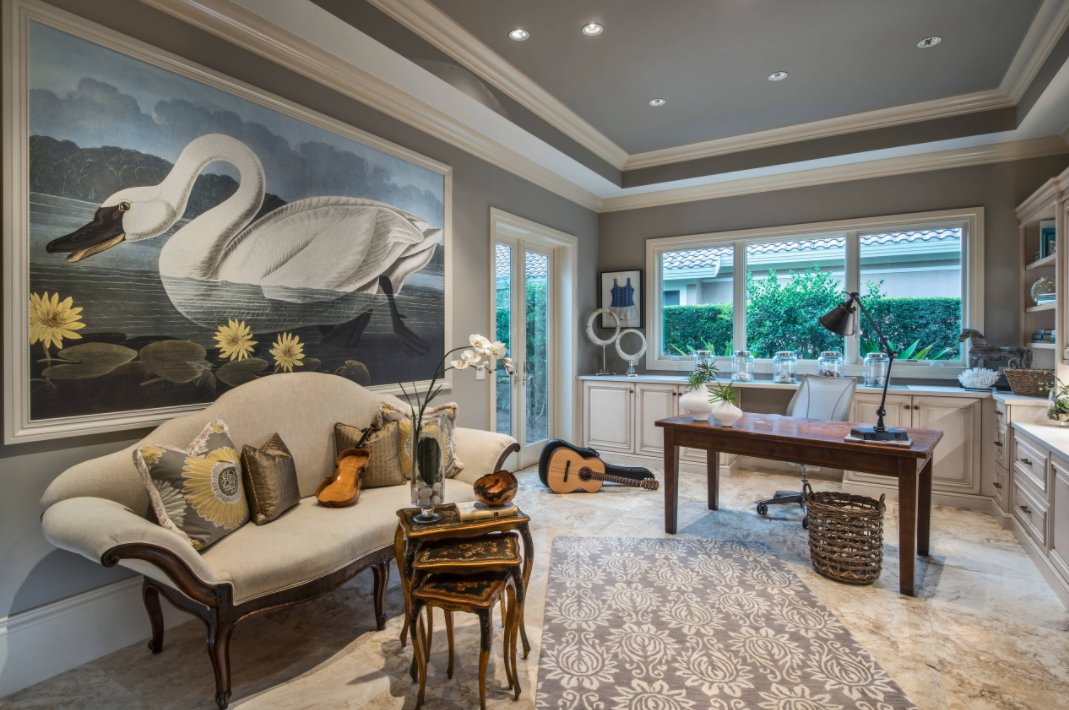




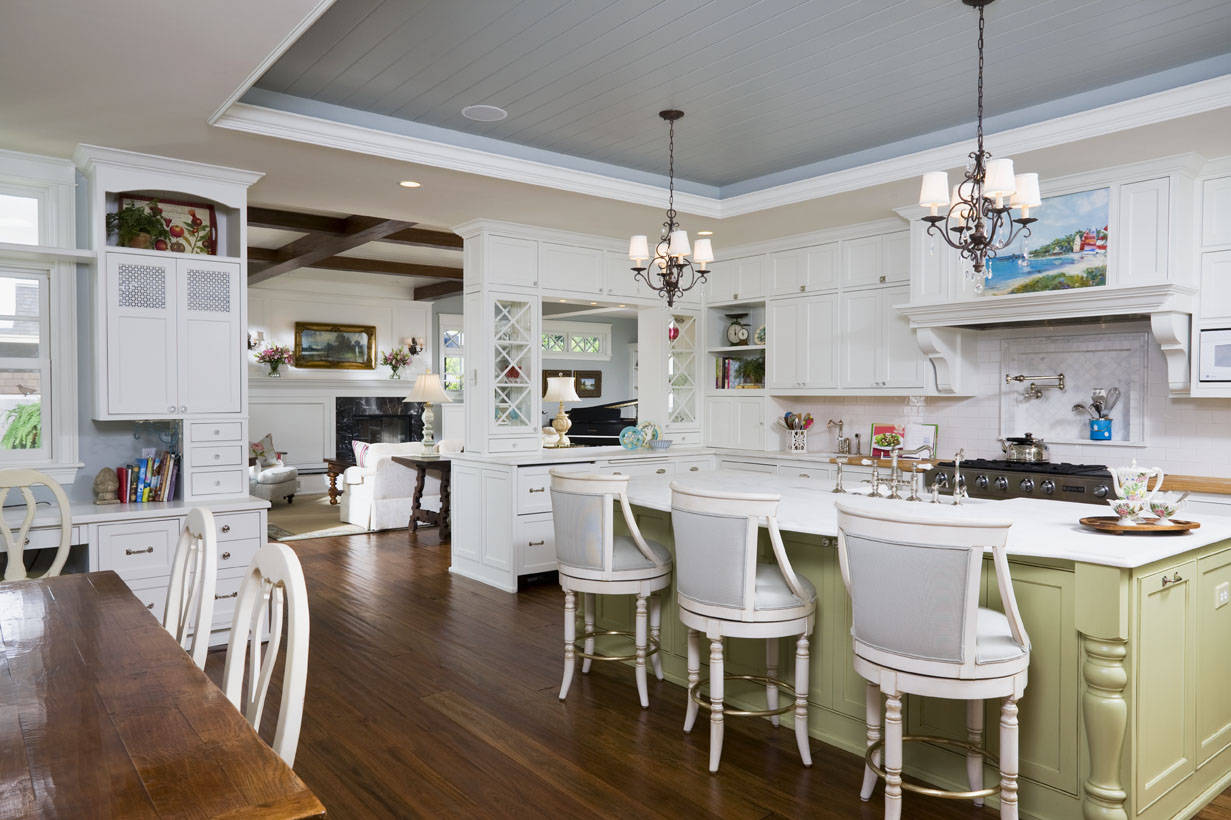
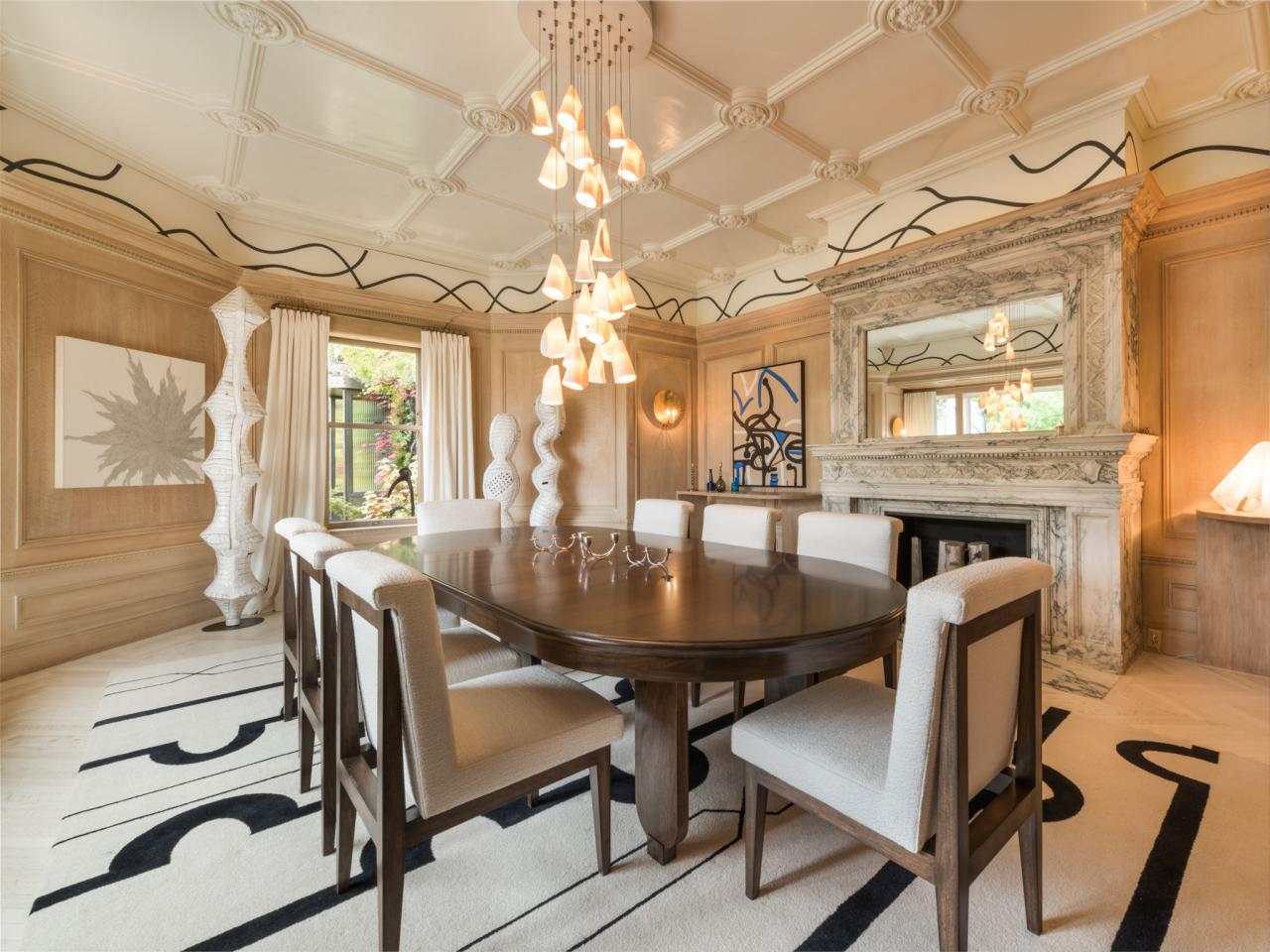






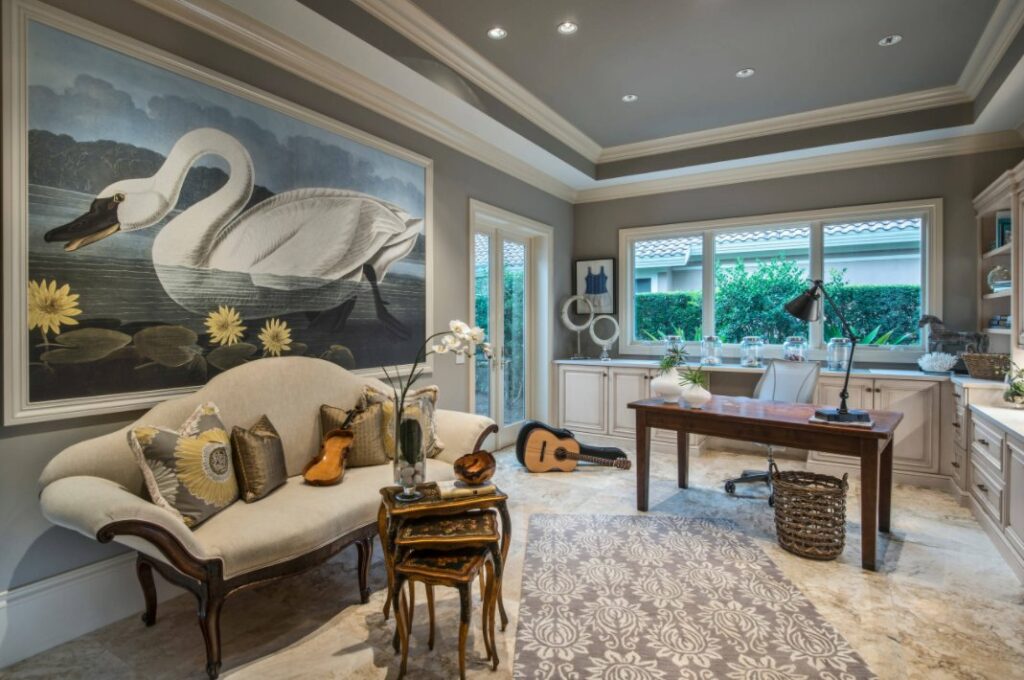

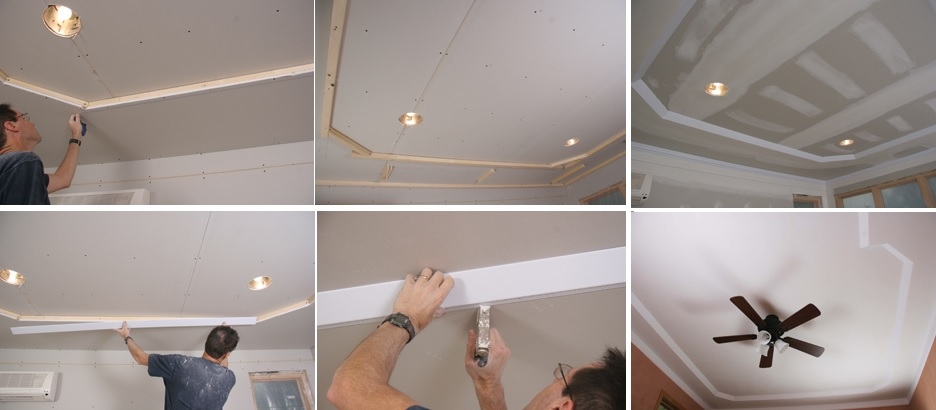


0 Commentaires